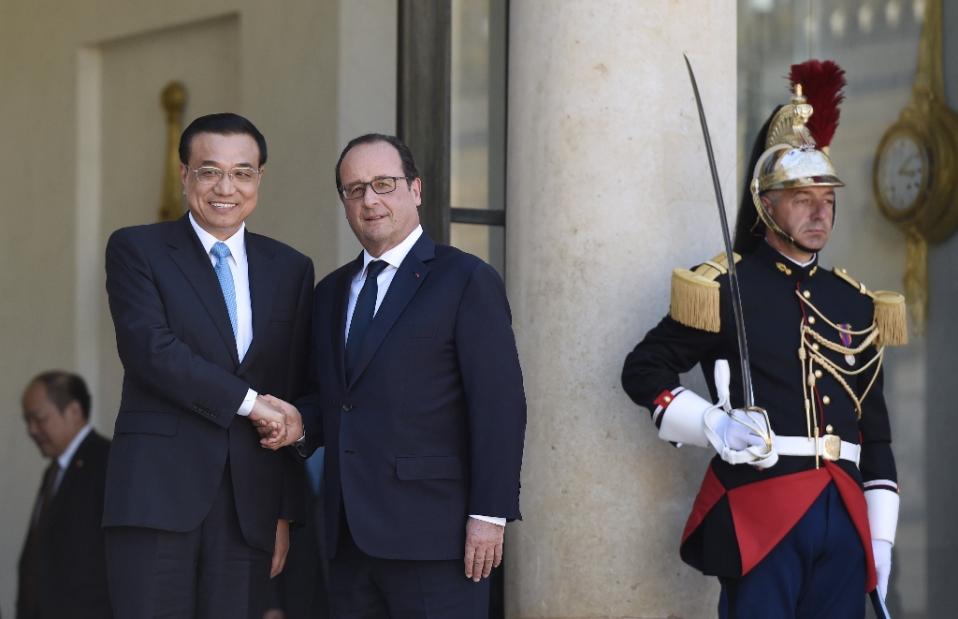
By Atâyi Babs
Reactions have continued to trail Beijing’s plan to peak emissions by 2030.
According to the climate action plan as outlined in its Intended Nationally Determined Contributions (INDCs), the world’s largest polluter intends to peak carbon dioxide (CO2) emissions by around 2030 and lower CO2 emissions per unit of gross domestic product (GDP) by 60-65% from 2005 levels by 2030.
The INDC includes information on progress achieved in these areas since commitments made in 2009. Noting the country’s vulnerability to climate change, the INDC relates that China will continue adaptation efforts in key risk areas, such as agriculture, forestry and water.
The statement, which was released following a meeting in Paris between Chinese Prime Minister Li Keqiang and French President Francois Hollande, notes China’s intent to increase the share of non-fossil fuels in its primary energy consumption to around 20% by 2030 and increase its forest stock volume approximately 4.5 billion cubic meters over the 2005 level by 2030.
Becoming the 43rd Party to the UNFCCC to formally submit its INDC, China plans to implement to achieve its goals, by implementing proactive national strategies on climate change; improving regional strategies; building a low-carbon energy system; building an energy-efficient and low-carbon industrial system; controlling emissions from the building and transportation sectors; increasing carbon sinks; promoting the low-carbon way of life; enhancing overall climate resilience; and promoting carbon emission trading.
China used the INDC to provide its views on the 2015 agreement, giving specific thoughts on many of the sections currently contained in the Geneva negotiating text. On the legal form of the agreement, China called for a legally binding agreement implementing the Convention that features mitigation, adaptation, finance, technology development and transfer, capacity building, and transparency of action and support in a balanced manner.
Reactions
Reactions have continued to pour out ever since the plan was released.
Believing that China can do more, Former Shell chairman Ronald Oxburgh stated that “China tends to be conservative on targets like this, so it seems likely that Chinese emissions will peak before 2030.”
The Natural Resources Defense Council singled out coal as a sector that needed more focus seeing as Beijing is the world’s top consumer of the fuel.
“China should establish a strong national coal cap in the next Five Year Plan to peak its coal consumption before 2020 and enable a swifter transition to a clean energy future,” noted Fuqiang Yang, the group’s climate change senior advisor.
Towing a similar path, Greenpeace China regards the plan as an exercise in tokenism.
“It does not fully reflect the significant energy transition that is already taking place in China. Given the dramatic fall in coal consumption, robust renewable energy uptake, and the urgent need to address air pollution, we believe the country can go well beyond what it has proposed today,” Li Shuo, a climate analyst with Greenpeace China added.
However, Samantha Smith of the WWF sees it differently. “This is the first major developing country emitter to set a total emissions peak target. In doing so, China has committed to both global climate security and to a transformational energy transition at home.”
“We emphasize the importance of the fact that China has made commitments beyond its responsibility as a developing country. But we hope that China will continue to find ways to reduce its emissions, which will in turn drive global markets for renewable energy and energy efficiency,” Samantha concluded.
According to Bi Xinxin of CAN China, “It is clear that the Intended Nationally Determined Contribution (INDC) which was lodged by China today is a serious step forward for the country’s transformation to low carbon and climate resilient development. Already a world leader in renewable energy, the government has announced it will roll out as much low carbon energy as the entire US electricity system by 2030.”
Reviewing the plan as a strong effort, Xinxin is of the opinion that “it should be viewed as the floor upon which additional efforts will be built. There are early indications that the country could exceed the targets it has set for itself. Bold actions are required from all levels of governments as well as from the indispensable private sector and civil society. China’s commitment towards the Paris agreement is an important milestone on the way to Paris and can catalyse stronger action from the rest of the world,”Xinxin says.
All Parties to the UNFCCC are expected to submit INDCs in advance of the Paris Climate Change Conference, which will take place in December 2015. Those submitted by 1 October 2015 will be included by the Secretariat in a synthesis report on their aggregate effect by 1 November 2015. Parties are anticipated to agree on a global climate change agreement to take effect in 2020 at the Paris Climate Change.











